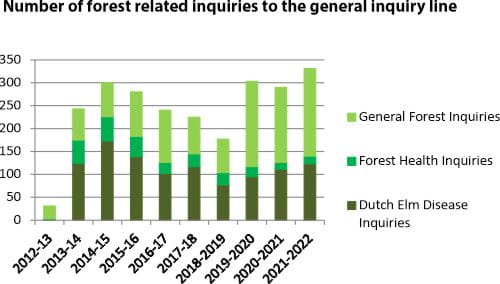
The modernization of client services improves access to information for land managers, stakeholders and the public.
The Government of Saskatchewan is continuously improving its service delivery through online services.
What's happening

What we are doing
The Ministry of Environment is committed to increasing online business transactions for the business it conducts. Technological investments are made to meet client needs and expectations.
The ministry maintains a general inquiry phone line for clients and the public. For common inquiries, staff access knowledge-based articles prepared by subject matter experts. Complex inquiries are forwarded to subject matter experts for resolution. Forestry-related inquiries are categorized as general forest, forest health or Dutch elm disease.
2006 – Sask Interactive Mapping - Digital mapping app
2012 – General inquiry phone line - General inquiry phone line and email
2013 – Confidential Online TIPP Information System - form is used to report known or suspected environmental, fisheries, wildlife, or forestry violations.
2014 – HAL - Purchase hunting, trapping or angling licence online
2015 – Environment Online Service - In a forestry context, it is to be used for Hazardous Spills reporting by industry
2016 – HABISASK - Hunting, angling and biodiversity information app
2019 – Web-based State of the Environment reporting site
2020 – Saskatchewan GEOHUB - Explore GIS Data and Maps from the Government of Saskatchewan
Development of electronic client-focused services related to provincial forest management has steadily progressed since 2006.

Why it matters
The modernization of ministry programs meets the pace of business and client service expectations. Clients have access to information and assistance through tools such as Sask Interactive Mapping and HABISask. Access to current and reliable habitat information, population and spatial data helps clients and the government make important management decisions.
Calls to the general inquiry phone line can also be used to detect the presence or movement of invasive insects and disease within the province as well as other matters of concern. The spike in general forestry inquiries in 2019-20 and 2020-21 can be attributed to increased inquiries related to timber permits, including own-use and fuelwood permits as well as questions on where to cut a Christmas tree.
